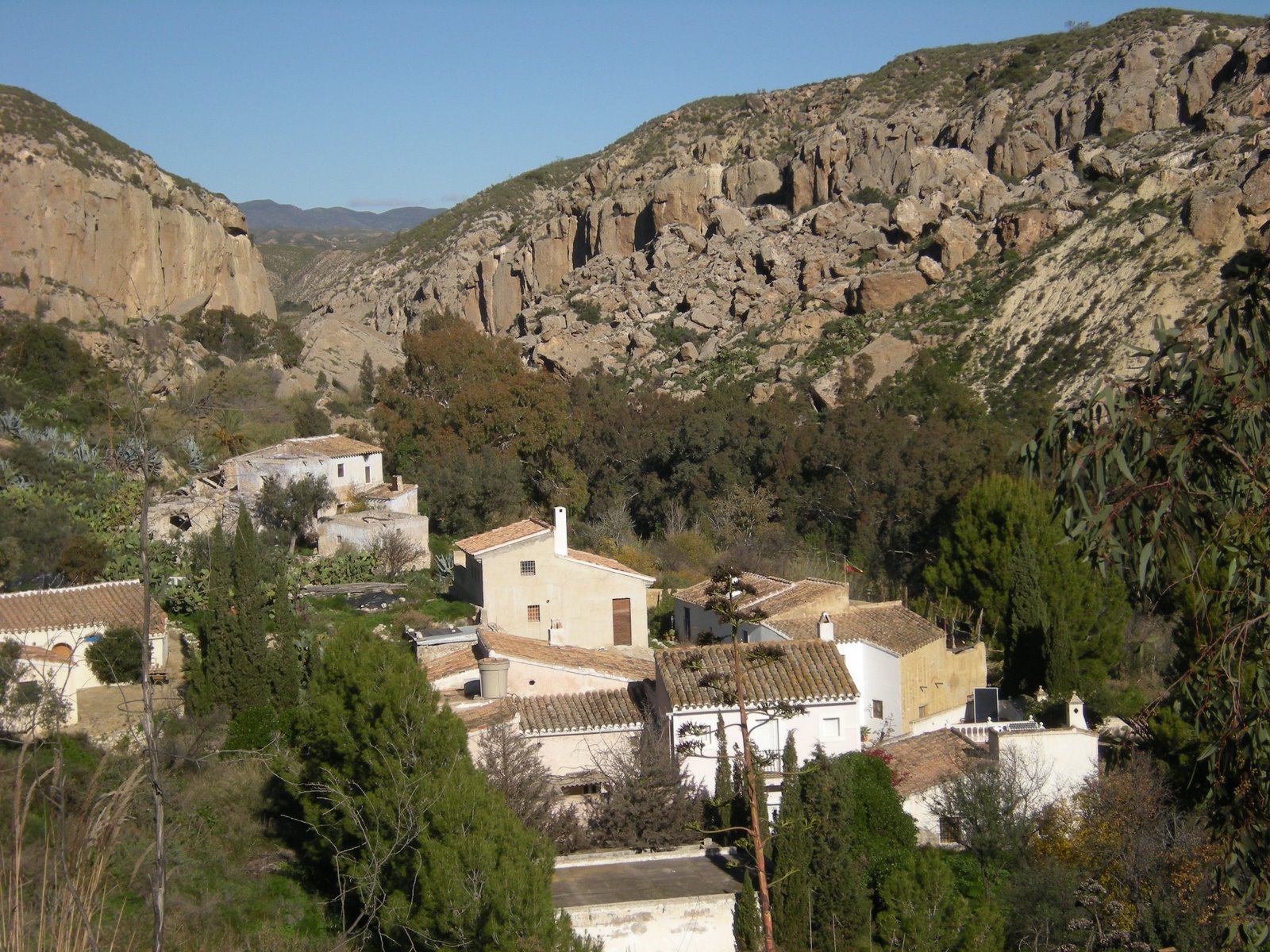
In the autumn of 2018 I made my way from Portugal to Spain to begin my 3 month stay at the desert community of Sunseed. Having just spent two months building a clay house on Keela Yoga Farm, I had some idea of what to expect from life on a sustainable community. But the depth and width of what this transient space had to teach went beyond my expectations. Tucked away in a little valley in Andalusia, Sunseed Desert Technology was originally founded in the 80’s with the aim of restoring the surrounding semi-arid ecosystem. While its success in restoring the ecosystem has been limited, today it functions as a centre of learning on all aspects of sustainable living. Throughout the past decades, thousands of people have been through this place, been inspired to create a better, more sustainable, world – and learned the skills that empower them to do so. This is an account of one of those people.
El Desierto
Sunseed is located in Almería, classified as the only semi-arid region in Europe. However, the climatic conditions of this region are not the result of the natural forces of the earth. Like many deserts, it was formed over millennia through the process of human over exploitation. Trees were chopped down, huge goat herds cleared the land of vegetation, the soil was drained of life through degrading farming practices. Without any plants, the soil can’t absorb water. So instead of rain causing life to flourish, it causes erosion – washing away what little had managed to take root. This process, negative cycles of over exploitation and desertification, has happened many times across the world. The ‘cradle of civilisation’, Mesopotamia, was home to the earliest of large human civilisations. The huge river basins of the Tigres and Euphrates rivers were lush with life, overflowing with abundance. Today it is a dusty desert. Intensive degradation of ecosystems in Europe goes back at least as far as Roman times, when we begin to see wholesale destruction of the great European forests. While very few European habitats have escaped the degradation of the preceding millennia, the south of Spain is now reaching end phase. Already many people have had to leave their villages, give up their ancestral way of life, because there is no longer enough water to support agriculture. Many predict that in the coming decades this entire region will no longer be able to support human life.

You would think that in these circumstances human beings would decide something needed to be done; that the overexploitation of this region had to stop; that we must give something back, or at least allow the earth to heal. But the pit of human ignorance is bottomless. Instead of stopping, or even slowing, our exploitation of this fragile habitat, we intensify it. Travelling to Sunseed from the nearby city of Almería, one is surrounded on all sides by the mar de plastico (plastic sea), a group of greenhouses so large that can be seen from the international space station. Though this ecosystem is on its last legs, we still manage to subject it to destructive agricultural practices, covering the land in pesticides, chemical fertilizers, and 450 square kilometres of plastic. Many of the oranges, tomatoes and courgettes that flood the supermarkets of Europe are grown in this sea of plastic. On top of the exploitation of Pacha Mama, the plastic sea is also the site of mass human exploitation. After fleeing their homelands (which have been devastated by the consequences of European colonialism) newly arrived refugees are welcomed into huge ghettos at the edge of this plastic monstrosity, and have little choice but to work under inhumane conditions (long hours, intense heat, air choked by various types of poison) for much less than the minimum wage.

After traversing the plastic sea, before you finally make it to Sunseed, you also have to pass by another monument to human short sightedness – one of the world’s largest olive plantations. The south of Spain is famous for its high quality olives, and olive oil is a huge export industry. In 2017 alone, Spain exported 922,000 tons of olive oil across the world. On this particular plantation, in badlands of Sorbas, there have been over four million olive trees planted across the 2,300 hectares over the last few years. Each olive tree needs 10 litres of water a day, meaning these four million trees guzzle 40 million litres of water a day. ‘But where do they find all this water in the middle of the desert?’ you might ask. This part of Almería is a karst system, meaning that water sinks into these hills of soluble rock, passing into huge underground drainage systems. Over thousands of years, this process of weathering and dissolution creates huge subterranean cave systems, and some of these caves end up storing large amounts water. One such underground cave, the Altos Aguas Aquifer, is the source of water for this oversized olive plantation. But the olive plantation is sucking the aquifer dry, and studies show that over four times the amount of water is taken out than comes in. This is not good news for the villages that depend on this aquifer to live, as it is one of the only sources of water in the whole region. So while these huge olive plantations makes millions from exporting olives all over the world (and receive millions in EU subsidies to do so), self sufficient farming communities that have lived in the area for generations are forced to emigrate for lack of water. The plantation’s exploitation of the aquifer was declared illegal by Spanish courts, but the plantation continues with their illegal appropriation of the water, with the local government apparently deciding not to enforce the law in this case.
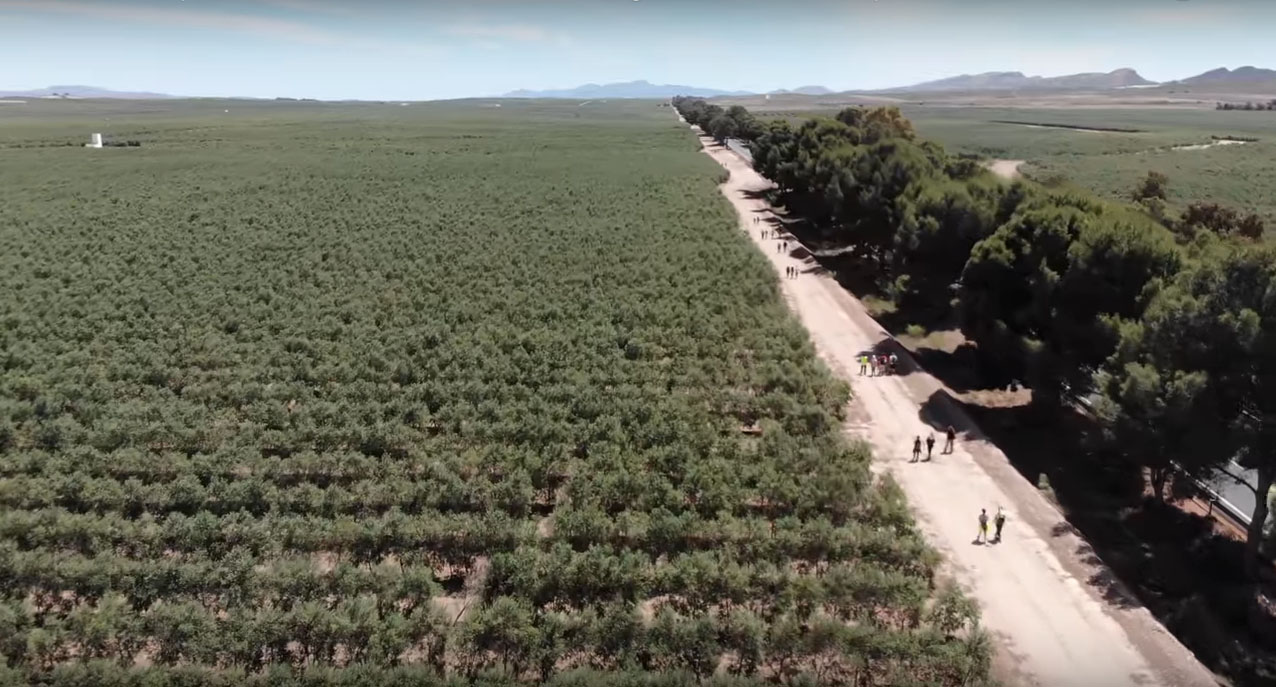
Los Molinos de Rios Aquas
Surrounded on all sides by the forces of greed and ignorance, Sunseed and the village it is located in, Los Molinos of Rios Aquas, is an oasis in the desert. Literally. After driving for some time through the desert, curving around hilltops as you go, you arrive at a narrow valley with a little village of gleaming white houses. Descending from the upper motorway into this village is like being transported into another world. In stark contrast to the surrounding desert, these terraces are filled with trees, flowing streams, thick corridors of bamboo, and the lush green of abundant life. Dotted along meandering paths are agave, prickly pears and all kinds of succulents. Fig, olive, carob, almond, palm, pine, and birch trees cast all important shade, and wild flowers are in bloom (orange calendula and purple mallow in the autumn). Many of the terraces are cultivated by the villagers, and are overflowing with all kinds of Mediterranean crops. If you can provide your plants with water, the desert sun means up to four harvests a year. Along with the many vegetable gardens, there are many other features to explore; a medicinal garden with all kinds of healing herbs; a meditation garden, kept cool by the walls of bamboo on all sides; a multi-tiered waste water system that helps to keep as much water possible in the valley.

Also resting on the terraces are a couple dozen houses, painted white with the gypsum of the surrounding hills. The history of this settlement goes at least back to the Roman times, although it was certainly a very different type of settlement back then. Until a few decades ago, the village was much larger, and the Rio Aguas was large enough to support multiple watermills. Today the river is essentially dried up, and the families who have lived here for generations decided it was no longer possible. That could have been the end of the story, and Los Molinos could have ended up like the many other ghost villages in Andalusia. However in the mid 1980’s, a group of young landscape restorers from England, inspired by the idea of ‘greening the desert’, decided to rent a few houses in the village and bought a large part of the surrounding desert. With this initial influx of energy and inspiration, the village attracted more and more like minded people. So although the original habitants are no longer there, there is a diverse mix of people from across Europe who have come to Los Molinos to keep the ecosystem alive (or find inspiration in the beautiful desert surroundings for other projects).

One of these projects is the Pita Escuela. Pita is Spanish word for agave and the Pita Escuela is dedicated to all things agave. After arriving from Germany over 20 years ago, Timbe, the founder of the escuela, learned how to make a drum from the huge belly of the agave flower. As these woody flowers can reach 8 or 9 meters in height, and are soft on the inside with a thick outer shell, they also make great didgeridoos. After that came shakers, flutes, masks, sculptures, and all kinds of things. And it’s not just the wood that is useful. The fibres of its prickly leaves are some of the hardest natural fibres on earth, and great for making baskets, ropes, etc. On top of this, the potential for bio gas production in desert regions is already well observed. Despite these myriad of uses, the Junta of Andalusia classifies the agave as an invasive species. This is a point that Timbe strongly disagrees with, arguing that the agave fills a niche that native plants don’t and contributes greatly to the desert ecosystem here, being one of the only things that can hold water and stop erosion. Whatever the case may be, this argument may soon lose importance as the agave has been under attack by the agave snout weevil for the last few years, causing its numbers to fall drastically.

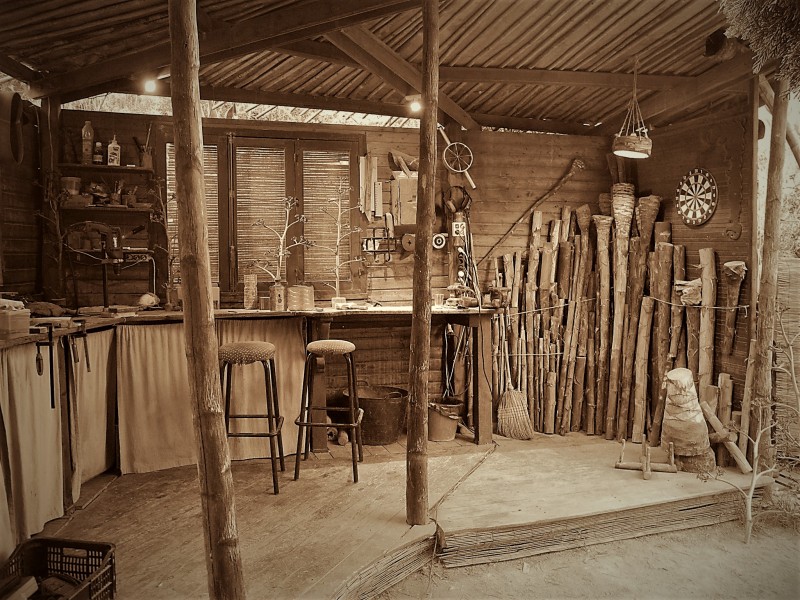
Other people and projects in the village include; El Mirador, a guest house run by former Sunseed members, and a jewellery stand run by a young Czech family. Another project with residence at Los Molinos is Urban Street Forest. This is a project set up in the Netherlands that has the dual goal of greening urban spaces (particularly in economically poorer areas) and degraded ecosystems. In urban spaces this takes the form of tree planting day with kids from local schools. The kids plant trees in large pots and hand them out to people in high rise flats to put in their balconies – in a strategy of vertical greening. The other goal is to plant trees in degraded ecosystems. And for this Raymond and Anuk from Urban Streets Forest live part of the year in Los Molinos, working to bring a bit more life to this desert eco-system. As this is the same aim as Sunseed, these two projects sometimes work in co-operation, but also according to their own rhythms. Although Urban Street Forest have only been in the village a short time, they have already planted many hundreds of trees, bushes, and other plants, as well as realising various water reattainment projects.

Finally, an important project in the village is the Casa de la Realidad, run by the formidable figure of Dave Dene. Dave is a long term resident and ecological activist, involved in a number of international and local legal cases defending ecosystems against destruction. Built in the 1990’s as a model sustainable house, Casa quickly became a meeting point for climate activists, researchers, shamans, musicians, and generally anyone who came to Los Molinos with good intentions. Because it is a lot looser in structure than Sunseed, most of the people who show up randomly in the village with a backpack end up staying at Casa. Dave is a generous and inviting host, but also has a certain intensity about him – not least because of the pack of ten dogs that accompany him wherever he goes. Casa de la Realidad is essential to the survival of Los Molinos, as it offers a necessary counterbalance to the chaos emanating from Sunseed. While Sunseed breathes life into the village -with a constant stream of new people, new ideas, new projects- it’s Casa that provides a degree of consistency. By monitoring and maintaining essential infrastructure, such as the terrace walls and the acequia, Casa ensures that life can be sustained in Los Molinos.
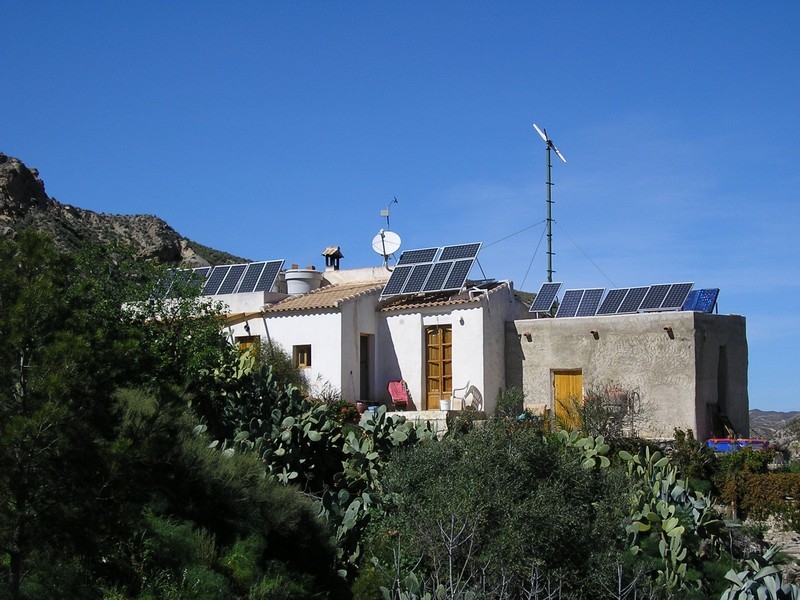
And the acequia system is worth taking a closer look at. Because although the Romans no doubt contributed to the degradation of the local ecosystem, they left behind a life line. It remains somewhat of a mystery how they knew where to dig, but after tunnelling deep into the mountain, Roman miners hit upon the underground storehouse of water, the aquifer, and directed this water across the length of the village. And it is still this Roman water mine that supplies the village with its lifeblood 2000 years later. Extending over a kilometre in length, the acequia system is a marvel to behold. After flowing out of the Roman tunnel, the water continues through a long series of pipes and channels. These channels need to be constantly monitored, maintained, and sometimes altered because of blockages, uneven flow, or collapse. Maintenance of the acequia often means crawling throughout the length of the line, chopping away roots under a thicket of trees; or going into the water mine itself on all fours, deep into the belly of the mountain, with water up to your chest, looking for any blockages. Another feature of this irrigation system is the ram pump, an impressive piece of appropriate technology that uses the force of falling water itself to propel that same water back upwards, thus allowing for much higher levels of retention. Requiring no external source of energy, the ram pump can transport 5 litres per minutes, 24 hours a day.

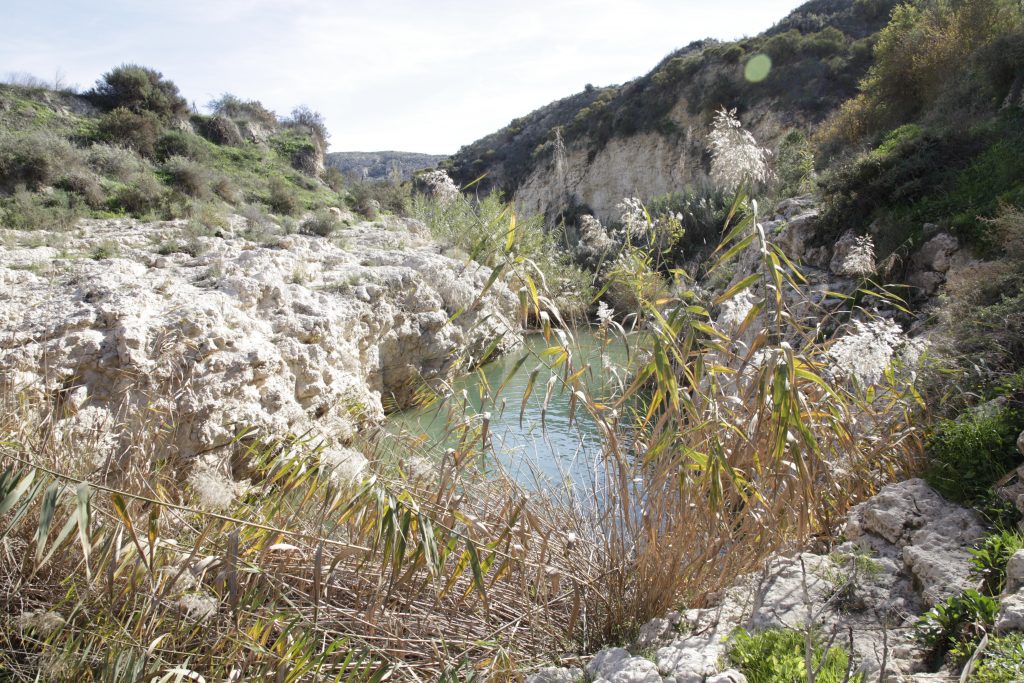
Leaving the village of Los Molinos, walking either way up the valley, there is an endless amount of things to explore. Taking the donkey road toward the nearest town of Sorbas (which until a few years ago was the only road leading to the town), one comes across all kinds of caves, rock and crystal formations, the ruins of old houses and waters mills, as well as natural pools to swim and bath in. The largest of which, la posa, is deep enough that you jump from a few metres above, and large enough that more than a dozen people can comfortablly swim around. After working all day in the punishing desert sun, going to cool down at the posa, surrounded by bamboo, swimming with a family of turtles, felt like a little taste of paradise.
Following the valley in the opposite direction from Sorbas, you reach the ghost town of El Tersoro. Until a few years ago, El Tersoro was a beautiful little village situated on a large ridge overlooking the Rios Aguas. Walking around, you get a sense of the people who lived here; the abandoned houses with their hand weaved esparto baskets, ceramic pots, and wooden chests; the schoolhouse that still has a blackboard on the wall. Before everyone had mobile phones and internet, and the donkey road through the mountains was the only way in and out, this little village was a world unto itself. However, things must have gotten more difficult when the Rio Aguas started to dry up, when the water mills could no longer make the flour needed for the daily bread. And when the Spanish government decided it was going to build a motorway on a bridge right above the town, life there was no longer an option. The villagers protested, tried to resist their village being cast into shadow of the motorway, but who are few poor villagers to stand in the way of progress? The locals were forced to leave, and the people of Madrid could reach their holiday homes on the coast that little bit quicker. For us at Sunseed, the real tersoro was the huge mounds of dried goat shit that lay all over the town, packed full of nutrients for the plants in the garden.

While it is all these various elements together that make Los Molinos such an interesting place, it is Sunseed that brings the most people and activity to the village. Spatially Sunseed is composed of four buildings. The main house has a large inside and outside dining area, a kitchen, office, and an 8 bed dorm. To the left of the main house is a house with rooms for people to stay – both single rooms for the long term people, and shared for the shorter term. Behind that is a small workshop. Along this street is an olive tree to sit around, serving as a smoking area and hang out point. A few doors down from the main house is Gay’s, another residence house. Up the hill, beside the Casa de la Realidad, is Isabella’s, a space with a large workshop, dorms and single rooms, a stand alone kitchen, and outdoor chilling space with a firepit. This space is a little bit away from the main community action, so good for people who like to be somewhat removed from the community chaos. Along with the various buildings, there are many different cultivated terraces that belong to Sunseed, each with their own micro-climate. Along with the terraces for grains and vegetables, there are a few orchids with almond, citrus and fig trees. There is also an area for composting, and a few very large compost toilets. One of the nicest areas is the tree nursery, located on a shady terrace at the edge of the village and filled with a diverse variety of trees planted by landscape restorers from times gone by. The baby plants can enjoy a comfortable couple of weeks at the nursery, with shade and water, before being brought out somewhere under the hot desert sun.
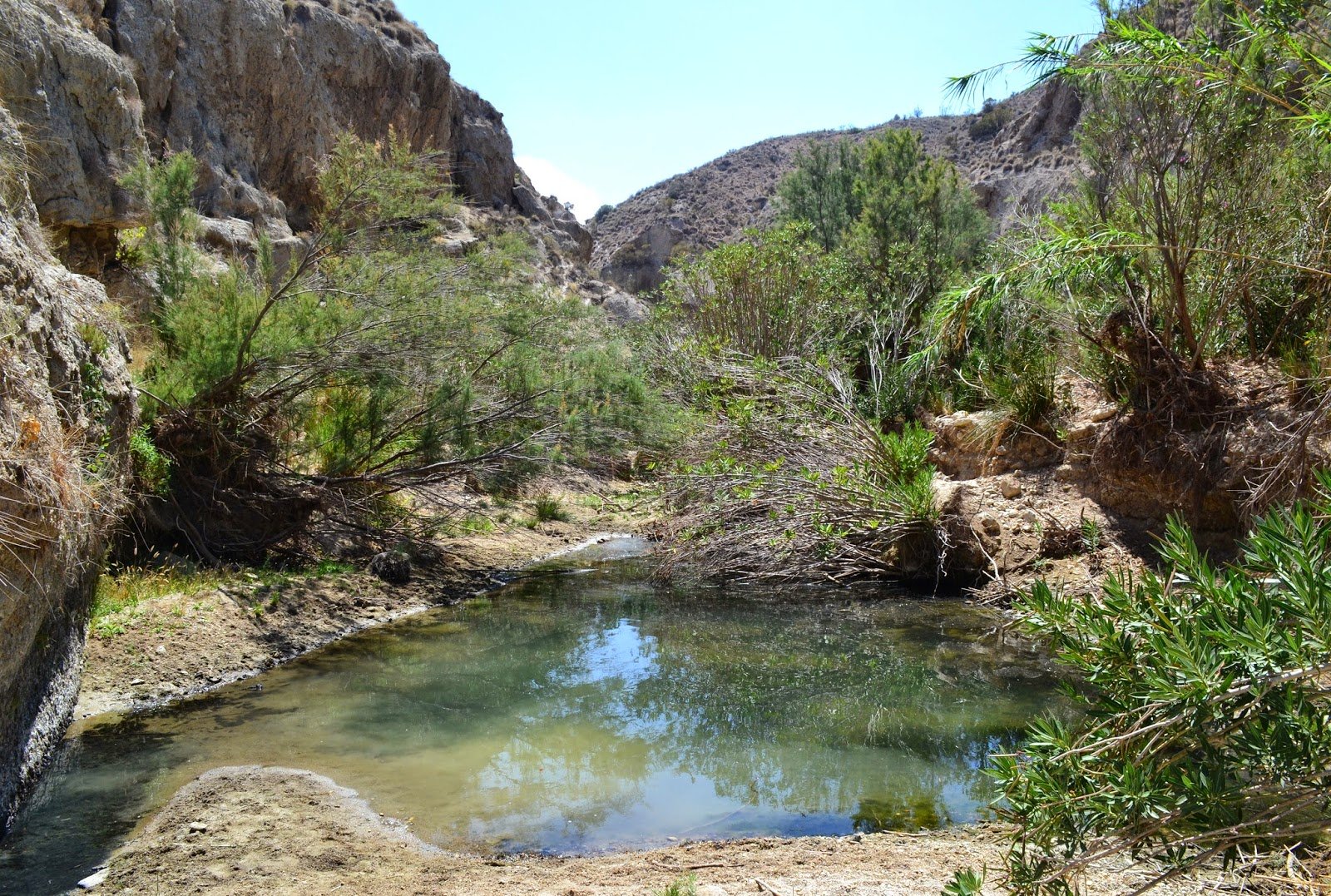
Sunseed History
Sunseed grew out of the UK based organisation Green Deserts in the 1980’s. This group wanted to develop practical methods of combating desertification, and so in March 1987 they rented a house in Los Molinos and founded Sunseed Desert Technology. The idea of ‘greening the desert’ is not only to combat, but to reverse the effects of desertification. Because the negative cycles leading to desertification outlined above also work in reverse. If plants once again begin to colonise the lands, they hold onto water, prevent erosion, and build a layer of humus. This leads to more water retention, and so on. The idea of greening the desert emerged from the environmental movement during the 20th century, from people who thought that ‘preservation’ was not enough. That the extent of human destruction was already so great, and the rise in the number of humans so great, that ecosystems had to be restored, revitalised. This not only has practical benefits, retaining and expanding fertile land, but also symbolic and spiritual ones. While many people have come to the conclusion that human beings are like a cancer on the earth, multiplying beyond control and consuming the larger organism it is a part of, actions that help mother nature to heal serve as a strong counter examples. We can be part of this world, of this web of life, and help it to thrive. In doing so we are also healing some of our own wounds, caused by our alienation from nature and each other.


But creation is a lot more difficult than destruction. A house can be destroyed in an afternoon, but rebuilding it takes a lot longer. And an ecosystem is infinitely more complex than a house. There are various ideas for how to go about greening the desert. The Zen natural farmer Masanobu Fukuoka claimed it would be enough to scatter millions of seed bombs throughout the desert and allow nature to take its course. In a similar vein, permaculture is about working with nature, observing the natural processes that prevent and reserve desertification, and mimicking them at a faster rate than is happening naturally. More recently an organisation has been set up to allow landscape restorers from around the world share knowledge, resources, and experience. Ecosystem Restoration Camp was set up in 2018 and is already linking over 20 projects from every continent. The founder of this organisation John D. Lieu was part of one of the largest and most successful landscape restoration project thus far. After many centuries of agricultural bad practice and over grazing, the Loess Plateau turned from a lush plateau, home to Chinese civilisation, into a semi-arid wasteland. Through an extensive programme of building terraces and increasing plant cover, an area the size of Belgium was restored to a green and bio-diverse landscape. This also made the plateau once more suitable for agriculture and lifted 2,5 million people out of poverty. A project that could even far outstrip that is the Great Green Wall. This initiative aims to combat the encroachment of the Sahara desert on the Sahel, the lands south of the Sahara, by creating a mosaic of restored forest and agricultural lands stretching across the whole continent. This highly ambitious plan has set the goal of restoring 100 million hectares of degraded land stretching out across 8,000kms, and thereby sequestrating 250 million tons of CO2 from the atmosphere.
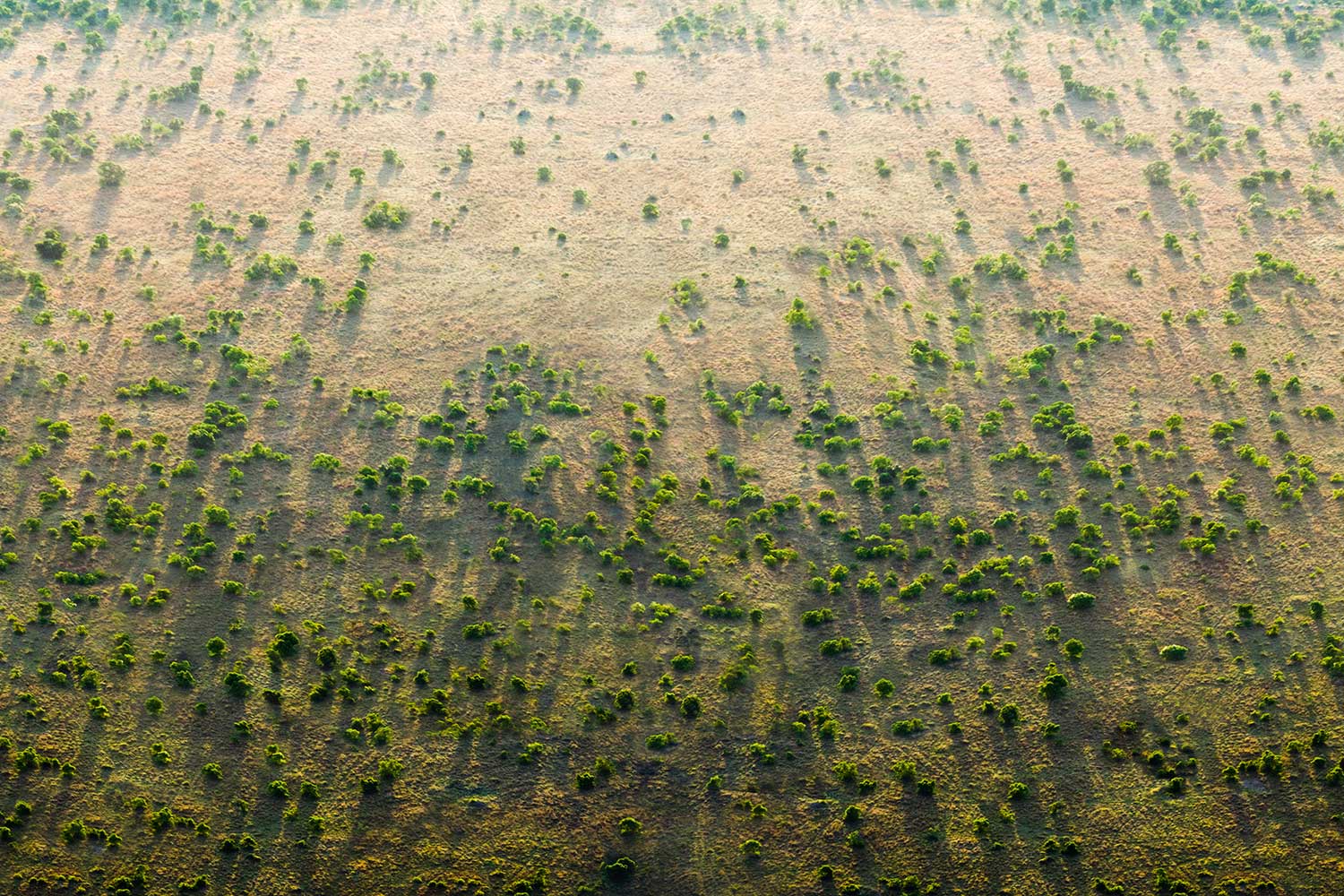
But back in 1980’s there had been far less investigation about methods of greening the desert. Sunseed therefore had two aims; greening the surroundings, and experimenting with methods of landscape restoration, scientifically documenting those experiments. Sunseed’s first undertaking was as part of the multiphase ‘Drought Defenders Project’. The first phase of this project was to plant a large number of (mainly non-local) species in the desert and monitor their progress. The next step a year later was to plant a large number of the species that appeared to be doing well. The idea of planting these non-native trees was to create more favourable conditions (shade, windbreak, foliage) for the introduction of the slower growing native species. Phase III was then a large scale planting of native trees, and over the next couple of decades many thousands of trees would be planted. Along with restoration effects, there were different initiatives in the area of ‘appropriate technology’. Projects including solar cookers, solar driers, solar panels (back then still quite new). As well as developing these technologies, Sunseed established links with communities in Rwanda and Tanzania to propagate them.
However, for reasons that we are about to look at, the exact history of the Sunseed is somewhat of a mystery. From what I can tell, Sunseed began as a relatively stable group of people who lived permanently in the village and were mainly focused on landscape restoration. It seemed to be pretty centrally organised, like most other charities and NGO’s, with a general manager who made a lot of the important decisions. The exact events that then lead to the transformation of Sunseed, whether or not these changes happened gradually or all at once, are unclear. Whatever the case, Sunseed is now a transient community, focused on many aspects of sustainability, and organised on the model of sociocracy.
Community Organisation
As mentioned in other articles, Sociocracy is a set of communication and decision making tools and principles for creating harmonious organisation and making group decisions. The main platform for putting these tools into use at Sunseed was the Monday meeting. During this meeting people brought up topics that needed to be discussed and decisions that needed to be made. Someone might want to use some of the communities funds to buy materials for their project, someone else wants to change a rule about cleaning, etc. This was the first time I experienced sociocracy in action, and it is no doubt a useful framework for community organising. However, one problem for me was the length, and the fact that debate often seemed to go in circles (figuratively, as well as literally). For example, at my first meeting there was a passionately contested debate about whether or not the morning community game should be mandatory or not. Over the course of what seemed like many hours, people debated long and hard about the nature of individual rights vs community responsibilities. For some it seemed to be an issue that lay at the heart of what it meant to live in community. The debate went on for so long that people managed to forget what points they had made, and made them again. While I was taken up by the drama of the whole affair at the time, afterwards I thought to myself; we were discussing this morning circle game for at least an hour and a half, the game itself lasts find minutes, that’s over two weeks of morning games in the time it took to discuss whether or not we had to go to the morning game.
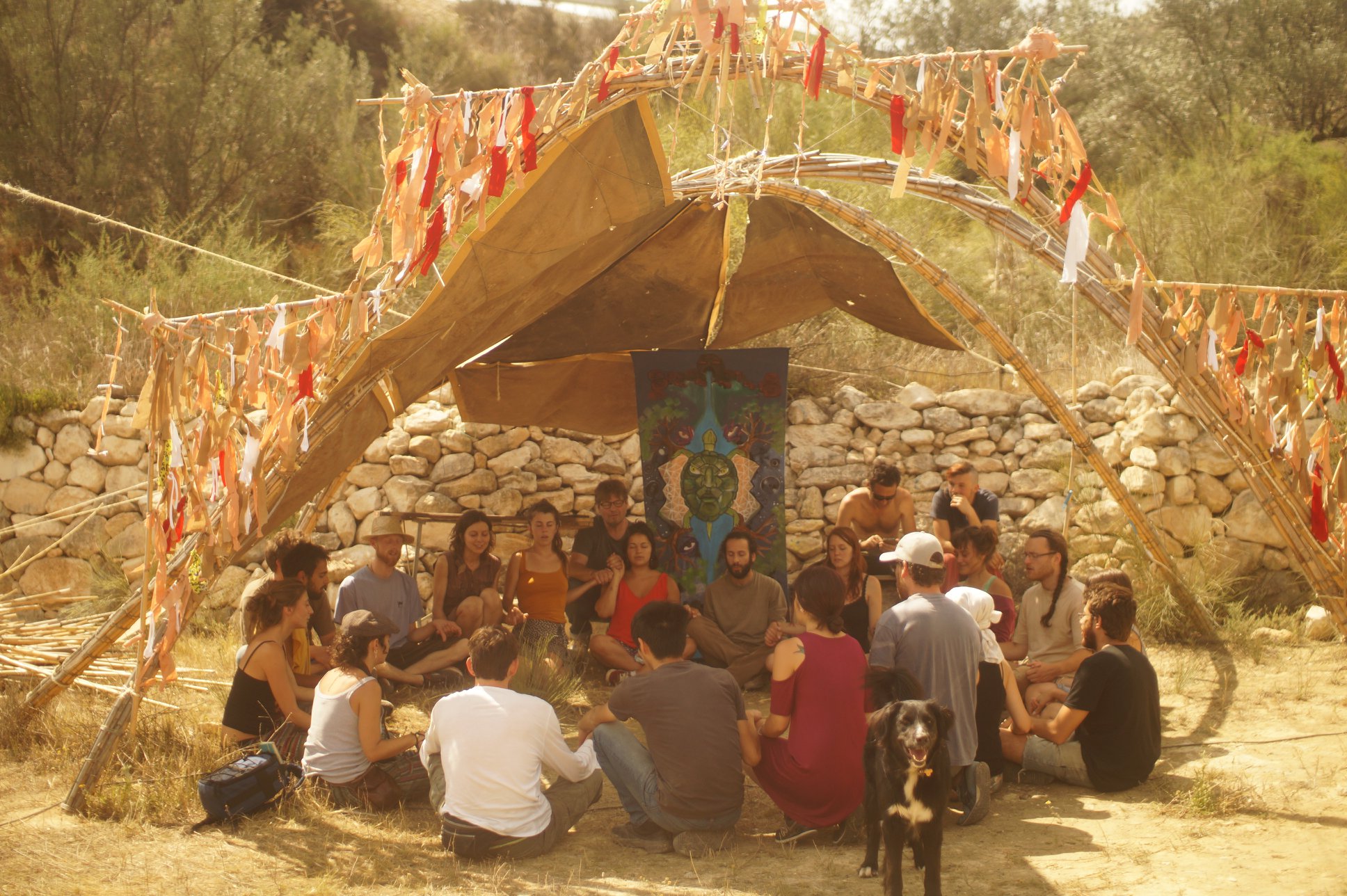
For people who don’t enjoy long drawn out discussions where everyone in a group of 20 gets their say, the Monday meeting would be trying. Luckily for me, they weren’t mandatory, so I spent most of my Monday evenings enjoying the only bit of stillness in the village for the whole week. However, although I didn’t have the patience for the Monday meetings, I’m lucky most other people did, because without such frameworks for communication things quickly fall apart. Living in a community can be difficult, and making decisions in a group can sometimes be a laborious process, but its still better than living alone or under unjust hierarchy. In order to achieve a balance between allowing all point of view to be heard, and a debate going in circles, skilled moderation is required – and Sunseed gives many people the chance to practice this skill.
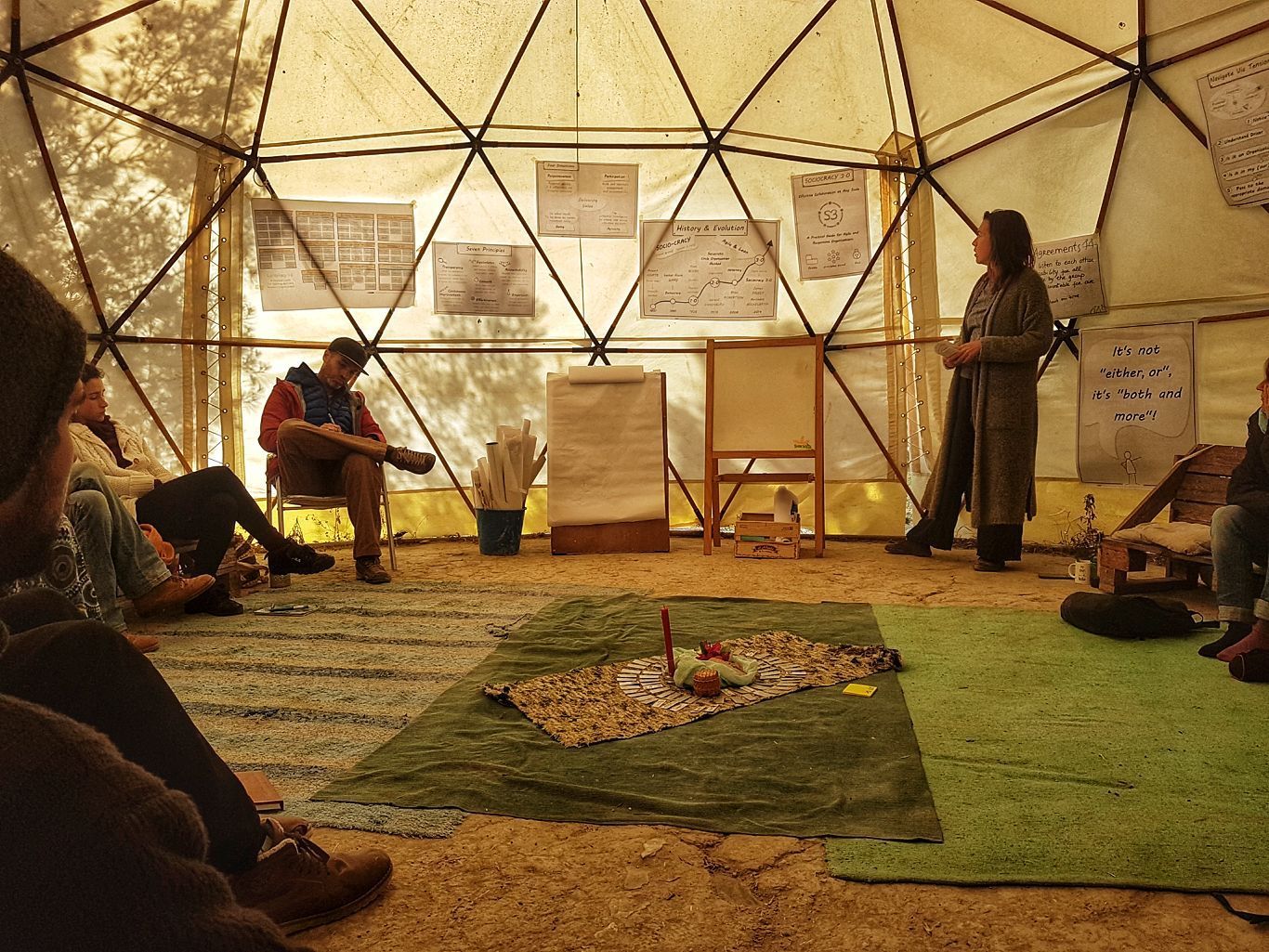
And although many of the points discussed often seemed not so important (to me at least), there are obviously sometimes important issues to discuss. During my stay the main point of contention was that the office team was making some executive decisions and instating rules that the rest of the group was not happy with. As the accounting and organisation of the community is something that falls within the remit of the office team, the office team felt it was able to make these decisions, regardless of what the rest of the group thought. And the classic power battle ensued, as those who tried to concentrate power within a single office battled against those who wanted to keep things decentralised, raising the question; ‘is humanity destined to infinitely repeat itself?’ Other times that the community got together were; the morning circle, where everyone got a chance to say what they’d be up to for the day, and if they needed help; and lunchtime, where any other announcements could be made.
Transient Community
Unlike most communities, the members of this group are always changing, people constantly coming and going. Co-ordinators of the various departments (which we will look at in detail below) are expected to stay for a year or two, but most other people stay for a much shorter time. And given that there is generally about seven co-ordinators, and up to 30 people at the community (and sometimes more people who are there for courses) the large majority of people at Sunseed for a short term. This gives the place an energy and excitement. Unlike a lot of established communities, where things become institutionalised and the willingness to change or try new things wanes, Sunseed is full of youth energy and people wanting to try out new ideas. Any routine or formal structures that are established can’t withstand the waves of new entries, and things are being constantly transformed and reinvented.
From what I heard, before my arrival the general trend was little individual responsibility and loose community structure, which apparently led to too little work and too much partying. This created a divide between the partiers and non-partiers, ending in the establishment of clearer community structures and responsibilities being created (which was still the state of affairs during my time there). And this transformation of community dynamics is only a snapshot in the history of this organisation. In two years there would already be no one left who knew of this community upheaval, just as no one during my time knew what had happened further than two years previously.
This had its advantages and disadvantages. On the plus side, like I just said, the fact that the project is always changing and evolving gives the place a feeling of excitement and energy. Whereas many communities fall into the inertia of routine after an exciting but tumultuous period of creation, Sunseed is somehow constantly in the period of creation with community dynamics always changing. This means that everyone who arrives can really become a part of the project, make it their own, in a way that is not really possible on the established communities. As a centre of education, a place where people can come and learn what it means to build a community, it is therefore second to none. As well as community building, Sunseed offers the opportunity to learn about many of the various elements of sustainable living. This learning comes from being shown by those with a bit of experience, or from just trying things out yourself. If you have an idea for something you wanna build (maybe its a compost toilet, or a bio-gas digester, or you wanna cultivate mushrooms), you are encouraged to try it out. There isn’t a huge amount of resources available, but the point of sustainable technologies is that they are built with cheap and widely available materials, so that shouldn’t be a problem.
However, the incredibly dynamic nature of Sunseed also has disadvantages. On a personal level, it becomes quite tiring after a while to be constantly building new relationships with people who are there for a short time, only to start the process again with new people. Even in my three months at Sunseed there was a large turnover of people, with the at the end group being significantly different from the one at the beginning. I noticed in myself that the more people come and go, the less willing I felt to invest time and energy in building relationships with the new people, and that was after a few months. A couple of years of this can lead to a psychological fatigue and because of this, long terms stays can be difficult for some people. Co-ordinators often don’t stay the allotted two years, or sometimes not even a year, with their departments falling into a state of neglect. Even when people do complete their full two years, sometimes there is no immediate successor and therefore no handover, and no continuity. Or sometimes, people come with their own ideas and methods and want to do things differently to the people who came before them. While this is good for people to learn and gain experience, it means that the projects suffers from a lack of continuity.
Because while the transient nature of Sunseed is advantageous in terms of learning, as people are given the responsibility and opportunity to follow their own ideas, it makes it impossible to set long term goals, or carry out effective long term plans. Sunseed is full of half finished projects. People start something, but then don’t have time to finish it; a half build compost toilet, a chicken house which then can’t be finished because people arrive who against the keeping of animals, a wind turbine that was never finished. The problems in the garden are even more pronounced. Sustainable modes of agriculture are based on observation. It’s about getting to know your surroundings, and then working with those surroundings, working with the forces of nature. But really getting to know your surrounding takes years. Seeing what plants grow, how they work with each other, the metrological conditions throughout the year, etc. At the very least, you need one year to have any kind of grip on the situation. But after a year many of the garden co-ordinators are already gone, and so the garden team is back to square one. Because of this, its difficult for Sunseed to build anything like food self-sufficiency (most of the food comes from a neighbouring organic farmer). Similarly, the original aim of the project, collecting scientific data on methods of landscape restoration is something that has fallen by the wayside. Serious scientific study into methods of landscape restoration takes times, often it takes years to see the effects of ones experiments, by which time the co-ordinators are long gone and replaced with someone else who starts new experiments.

But the weakness of the project is the flip side of its strength. What is so valuable about Sunseed is that so many people can come, learn, and experiment with the various methods of sustainable life. But because so many people are coming, so many people are going, and there is a lack of consistency. You can’t have one without the other. And although there are some in Los Molinos who are frustrated with Sunseed, who want it focus more on the original goal of greening the desert surroundings, this would mean that it no longer functions as a broad centre of learning on sustainability. And because of the nature of the organisation, particularly its lack of funding and resources, it is far better suited to being a centre of learning than a serious attempt at large scale landscape restoration.
Centre of Education
So what is it that Sunseed teaches? What is it that we have to teach and learn to become a sustainable society? Contrary to what politicians, corporations, or the Paris Climate Agreement would like you to believe it, sustainability does not just mean replacing fossil fuel with solar panels. The modern era has seen the emergence of a lifestyle that is unsustainable to its very core. Things are designed to break so they must be bought again. Chains of production are made as long as possible. People no longer eat food from their local surroundings, but rather fly them in from the other end of the earth. Our society functions by convincing people to consume things they don’t need, at an exponential increasing rate. Solar panels don’t fix this problem. What the situation calls for is a complete transformation of many aspects of modern life. And so, Sunseed has different departments that correspond to some of the most important elements of this transformation.
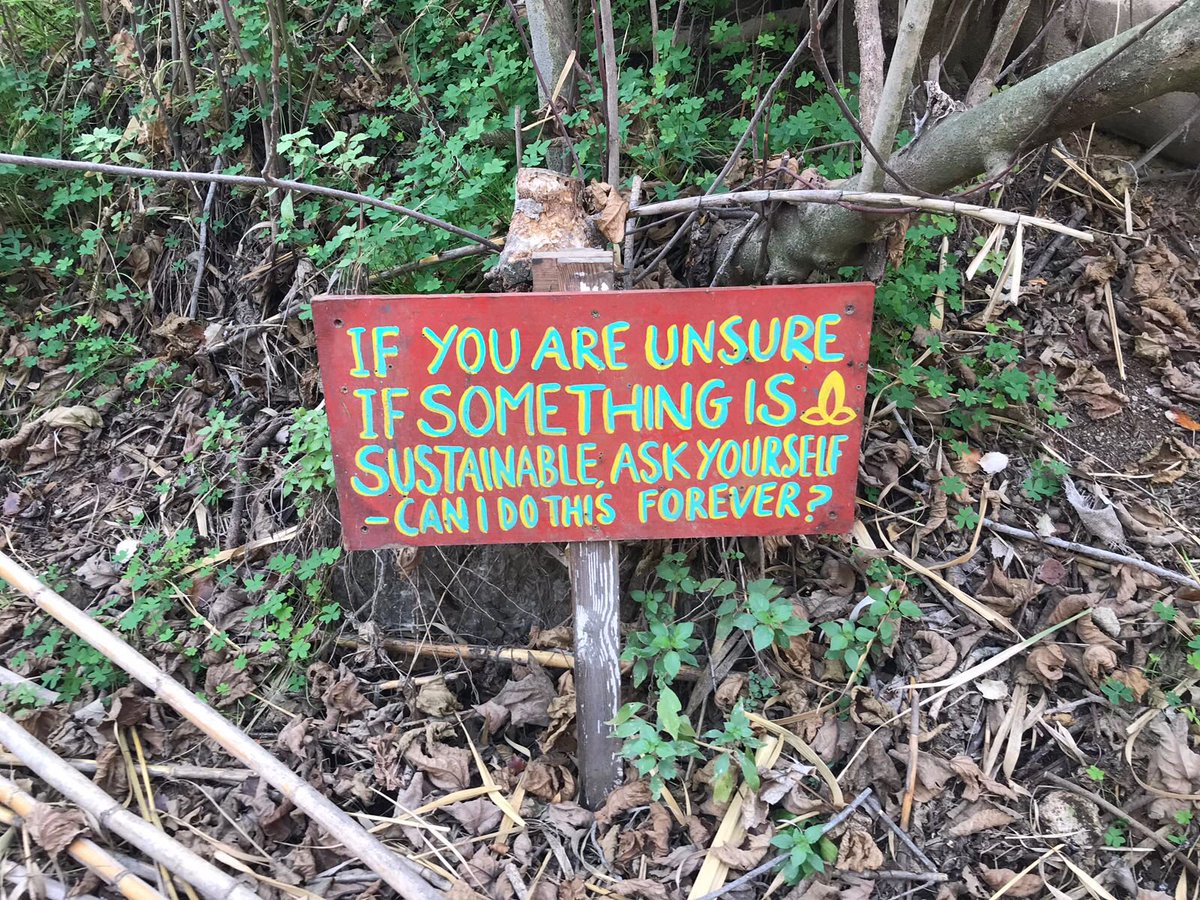
The first of these departments is organic gardening, or sustainable agriculture. Food is the at the centre of human existence, and so sustainable forms of agriculture must be the foundation of any social transformation. If all others elements of industrial society collapse, but we are on firm footing agriculturally, then we have at least secured the base necessity of our existence. But if we continue with the industrial mode of producing and consuming food, the current environmental crisis will bring hunger and famine on a previously unimaginable scale. Today industrial agriculture is the main cause of deforestation, land degradation, and the collapse of ecosystems worldwide. On top of this, it is one of the largest contributors to global heating, accounting for about 20 – 25% of global emissions. Our way of thinking about agriculture, our way of relating to the natural world needs to radically and rapidly change. If we continue to bite the hand that feeds, treating nature as a factory producing food for our bloated cities, we will quickly find that the once bountiful natural world can no longer meet our basic needs.
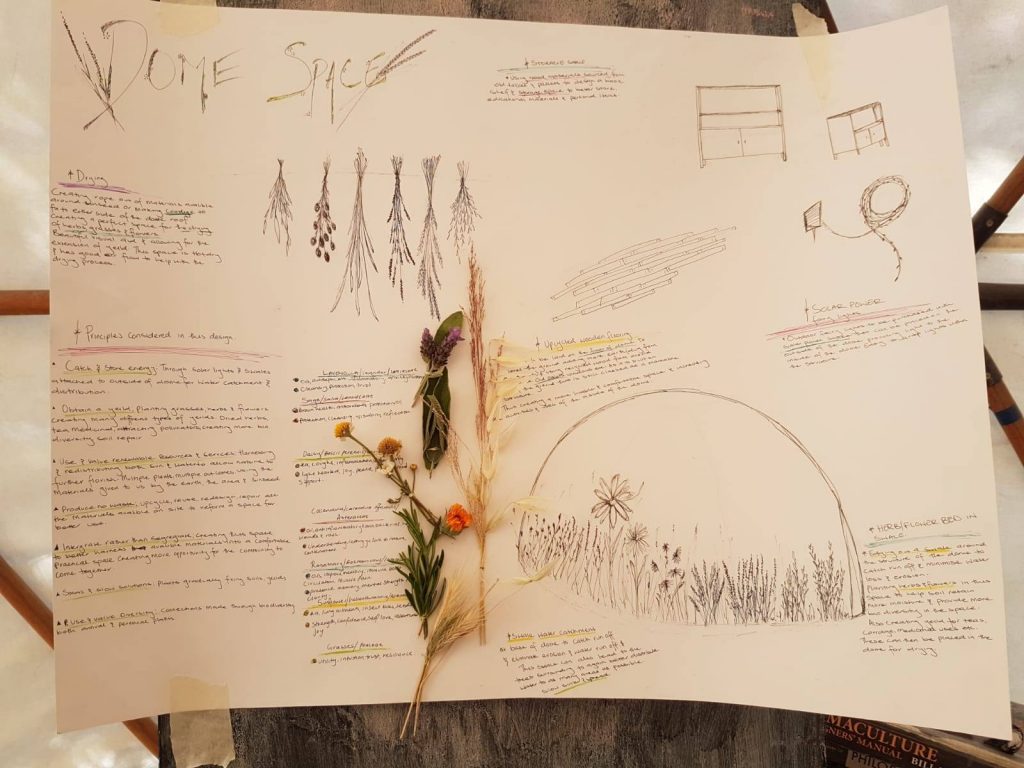
Some examples for how this change in mindset translates into practical application are; the majority of people again start producing for food themselves (with the rest sourcing their food locally); ending the use of poison to repel unwanted plants, fungi, and animals; replacing synthetic fertilizers with natural compost; using methods of agriculture based on human labour, rather than heavy machinery; managing water in a sustainable way; replacing monocultures with polycultures; maintaining a large, non-modified, gene pool for all cultivars; always adapting farming methods to local conditions; and assessing methods and results in terms of the entire ecosystem impact, rather than just yield. And these are merely the essential points – things that need to happen immediately or we risk global famine in the not so distant future. There are other things (such as not tilling or ploughing the ground, or basing genetic selection of cultivars on ecosystem functions rather than just taste) that could be looked at later once the rest of the house is in order.
At Sunseed, all of these essential elements of sustainable farming are to be found. And because of this, work in the gardens was not only sustainable, it was joyful. Working under the sun, surrounded by abundant green, marvelling at the mystery of the flowers, the smell of earth, and the touch of dew, as birds cheerful chirped away. Unearthing the hidden lives of a million little creatures, and the intricate web of roots that connect them all. Thoughts melt away as you reconnect with the source. After a period in the garden, you realise farming is a spiritual practice, as much about connecting with land and life, as producing food to eat. At Sunseed most of my garden time was spent building Hugelkultur beds, saving seeds, preparing compost, and trying to keep bindweed from taking over the garden. While its good to maintain a high level of bio-diversity, intervention is sometimes necessary. This bindweed carried with it a fungus that made short work of the crops, and so it was an unwelcome visitor to our gardens. Along with protecting the plants from disease, we provided them with food in the form of compost, and water. As mentioned, the gardens are irrigated by channels (trenches dug around the vegetable beds) that are connected to the acequia system. When the ground started to dry up, we would open the floodgates, filling the channels with water, quenching the plants’ thirst. During my time most of the gardens were mainly filled with annual crops, but the garden co-ordinator was taking step to introduce method of agroforestry
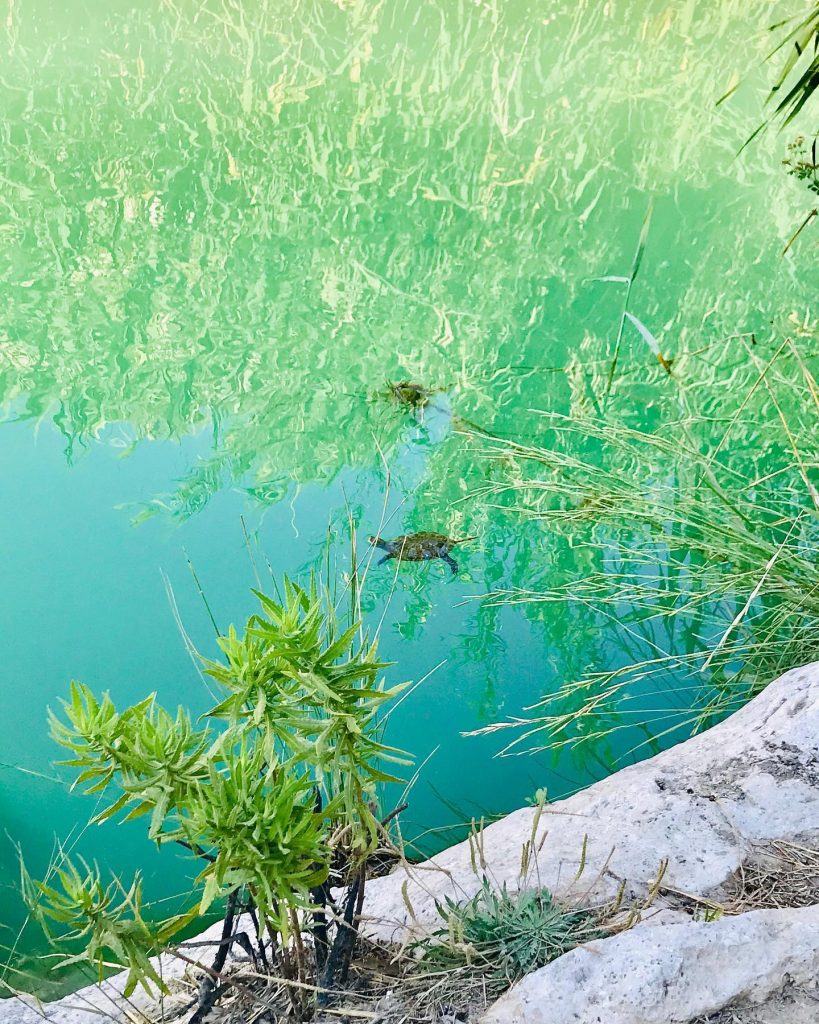
The next thing that Sunseed teaches, the original focus of the project, is landscape restoration, in the drylands department. The first thing to say is that, while it began as the main aim of the project during the initial two decades, the effects of these 30 years of landscape restoration are modest to say the least. Of the thousands of trees planted, only a few survived, mainly solitary pines left to fend for themselves in the sweltering desert heat. This is in some way to be expected. Even with the best of conditions there is no guarantee that a tree you plant will reach maturity, and in the desert you have to work under the assumption that only a minority of things you plant will get that far. But still, after 30 years you would like to see some measurable level of progress. The Loess Plateau has a thicket cover of green and thousands adolescent trees after 20. But obviously we are dealing with two very different projects. The restoration of the Loess Plateau had long term planning and huge resources and energy to back up that plan, something that the landscape restoration department at Sunseed lacks. Because now the focus is no longer on the desert, but more generally on sustainable lifestyles, it is often the landscape restoration co-ordinator alone, with basic tools, who crosses the posa, climbs up the hill and carries out the labour intensive work of landscape restoration. Obviously there is only so much you can achieve in such conditions.

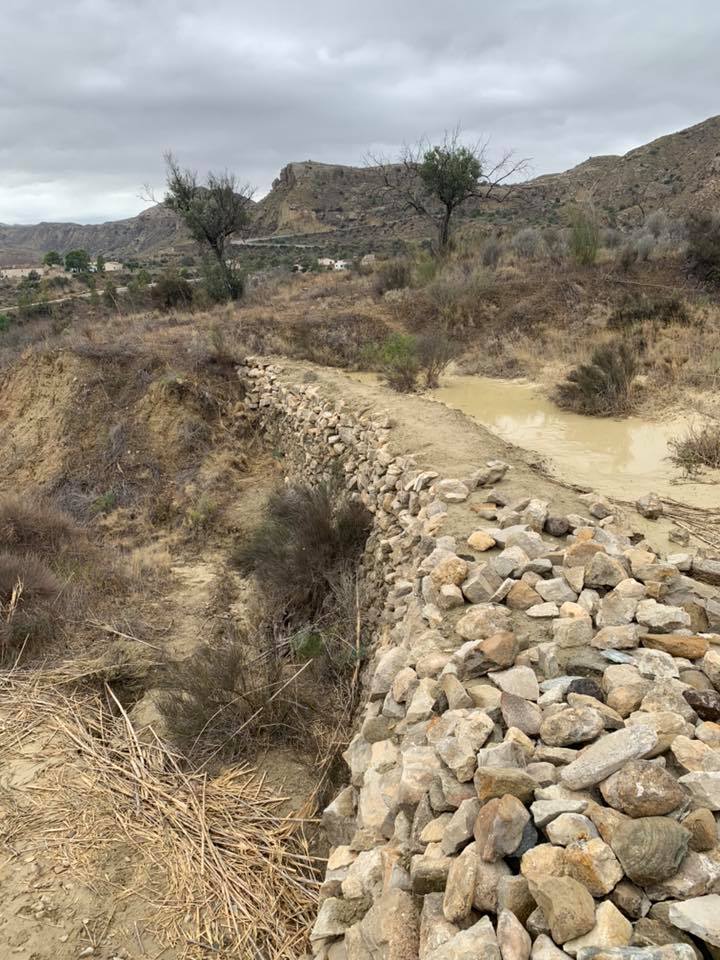
Having said this, working with the drylands co-ordinator and the Urban Street Forest team, designing strategies and undertaking initiatives to try and help the local ecosystem, was some of the most fulfilling work have ever participated in. The feelings and experiences you have in the drylands are similar to that of the garden, but even stronger. While you need to work with local conditions in the garden, there is a lot of intervention, and so the human system of planning is just as important as the natural systems. But in the desert there will be little to no intervention. The survival of these plants will depend entirely on the natural systems that surround them, so observing and understanding these natural systems is paramount. When choosing a spot to plant you need to tune into every little element that contributes to micro-climatic conditions, the sun and shade, the wind barrier, water absorption. You imagine yourself as this little plant, cognisant of their needs and desires, trying to get a sense of what their life will be like here, before you can decide whether or not to spread your roots. Another element that adds to the spiritual benefits of landscape restoration is that you are working not for any direct human benefit, such as producing a yield, but entirely for the sake of nature. Selfless action is the most powerful means of overcoming the suffering caused by the ego, and working with the pure intention of helping the natural world to heal is a powerful antidote to the egotisical actions that brought about the destruction in the first place.


Often we would plant in the shade of the trees planted by previous landscape restorers that had managed to survive (mainly pine trees). After planting them into a deep hole with a bit of compost, a lot of water, and mycelia collected from the soil of surrounding trees, we would often surround the saplings with a stone or two. We would also generally provide them with a friend or two, plant companions, which would provide shade, protection from grazers, nutrients in the form of foliage, or attract beneficial insects. Lastly a thick blanket of mulch would help retain water and protect the earth from the suns rays. After planting, the next most important action in the drylands was water retention projects. Although it is a desert, it does rain sometimes, usually about 150-200ml a year. The problem is that of this 200ml, maybe half of it will fall in a huge storm that takes place over night, causing erosion and washing away before it can be absorbed into the ground. To try increase water retention we dug swales (essentially large holes with barriers around them), constructed dams, and improved terraces, in the hope of slowing the water down at different points so it had more time to sink into the earth.

A lot of our work took place in a single steep gully, a point of high erosion where we knew a lot of the rainfall would converge. What we didn’t know was exactly how it would converge; where it would collect, or quickly overflow, where there would be mudslides and erosion. When the big storm did finally come, a deluge that rained 90 litres on every square metre of ground and caused la posa to double in size for the next couple of days, the course of the water was laid bare. Many of the trees we had planted in the gully lay under a thick layer of mud, and some of the dams we had build were completely destroyed. But many trees survived, and many of the dams served their function, causing the water to sink deep into the ground. When I first went up to exaime the effects, stepping on previous dry solid ground, I found myself almost up to my waist in a mud trap. Hundreds of litres of water had been stored by our simple dams. Water is life, and no one understands this better than desert plants and animals. Understanding, and slowing, the course of this water before gravity takes it back to the sea is essential in restoring healthy and bio-diverse terrestrial ecosystems.
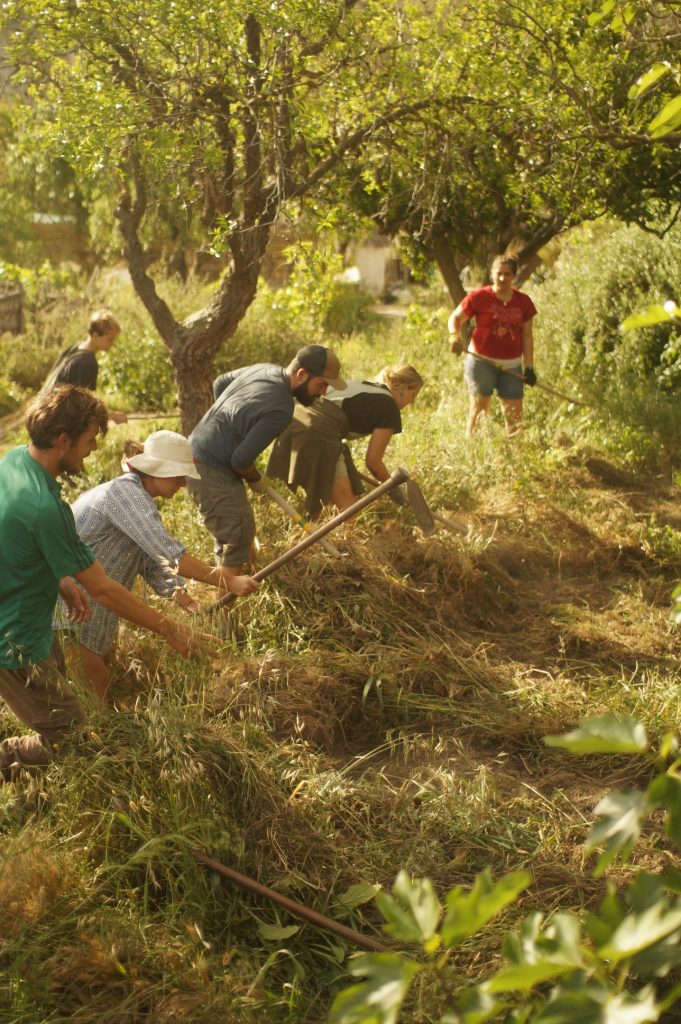
The next important element of sustainability that you can learn about Sunseed is appropriate technology. Along with economic growth, technological advancement is how modern society measures its progress. While humans have developed and used tools to manipulate their surroundings since before we were humans, modern society has raised technology to the status of a God. High priests of this cult of technology promise an end to all our earthly suffering, to take us to the celestial realms, and even fix the environmental problems that industrial technology has caused. In the past, technologies were developed to serve some end, today technological progress has become an end a itself. Instead of consideration of its effects, technologies are now developed according to a logic of ‘if it can be done, it must be done’. And the reason for this is clear. Without a constant stream of new commodities, the capitalist engine of destruction runs out of fuel. We have apparently lost all agency in the evolution of this machine, so that it continues to evolve and expand to detriment of the rest of life on earth, including ours.
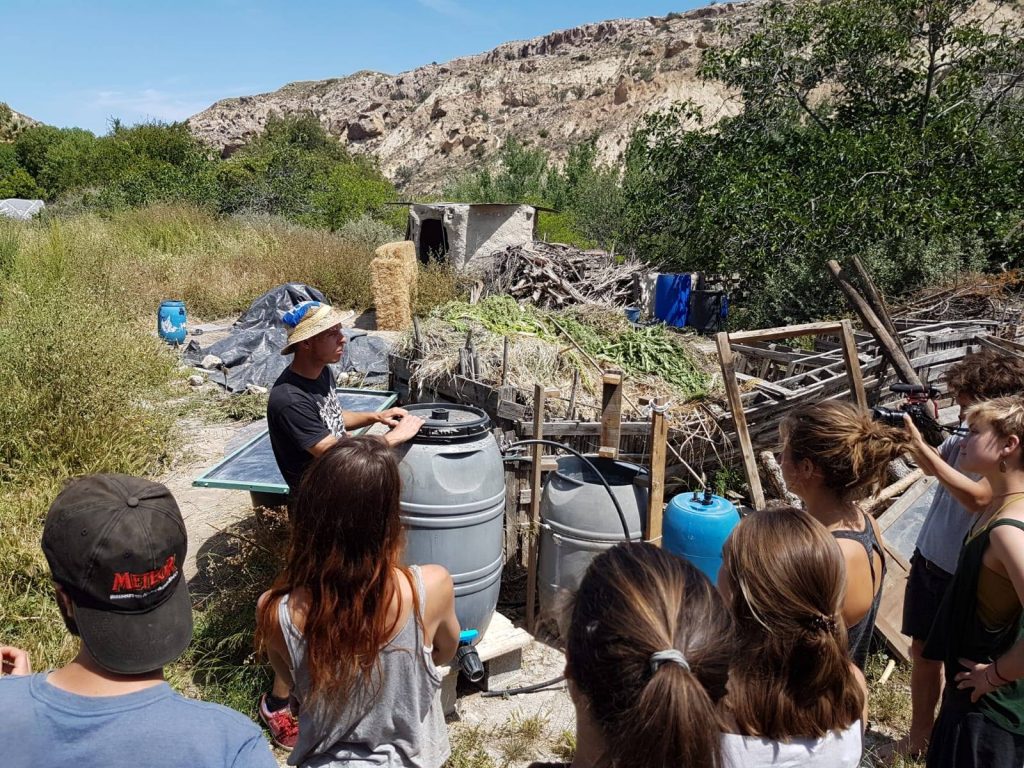
But as this paradigm has been adopted, so too can it be left behind. Technological progress can once again be used to serve humanity, rather than humanity being used to serve technological progress. That does not mean we must dispense of all hitherto developed technologies, but rather that we judge technology according to different standards than that of industrial civilisation. Essential to any valuation of new or old technologies are their environmental effects. Once we become conscious of the fact that there is limited resources on the earth, and that the use of these resources comes with a cost for the environment, then the energy and resource intensive high tech machines of industrial society no longer seem so advanced. Instead alternative technological movements, such as the movement of ‘appropriate technology’, or the ‘low-tech’ movement, develop tools that are suited to the world we live. The values and principles of these movements are developing technologies; that actually serve some human need; are made using cheap and widely available materials; are not any more complex than they need to be. These principles mean that technology can serve as many people as possible, with as little detriment to the environment as possible.
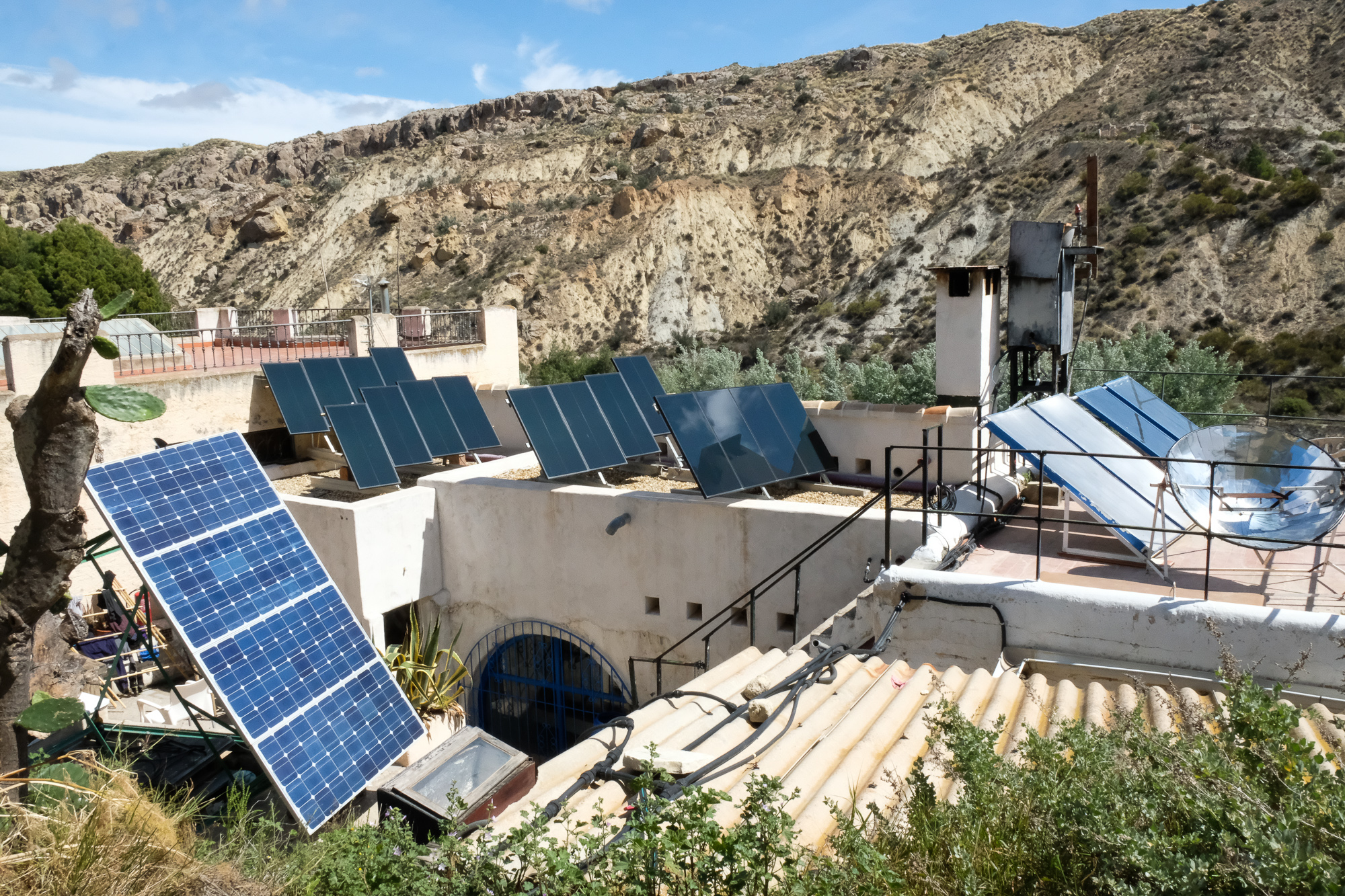
A few of these technologies have already been mentioned above, such as the acequia and ram pump. Other examples are the solar drier (used for drying fruits, etc.) or the solar cooker. The solar cooker consists of reflective metal plates that direct the sun’s rays onto your pot. On a good day, this would reduce the gas use by about half. Another piece of technology was the hay box, essentially a highly insulated storage, so that hot things stay warm. One piece of appropriate technology with huge potential, and already an essential piece of technology in millions of Indian and Chinese villages is the bio-gas digester. Bio-gas is the combustible gas (mainly methane) that is produced by the anaerobic decomposition of organic materials. So if plants, or left overs, or shit are left to decompose in water they will produce a gas that we can use to cook, or heat our homes. It is essentially the same thing as what we call ‘natural gas’ . But instead of drilling into the earth to release stores of gas that have already been trapped, you tap into the natural gas cycles – gas that will go back into the atmosphere anyway. The beauty of this technology is its simplicity. We managed to construct one out of a few barrels and pipes that were lying around the garden. And there are even simpler designs where all you do is dig a hole in the ground with two pipes for an in-and-outlet. But this simple design is enough to meet your needs for heat and warmth (along with producing some high quality compost at the same time). No huge industries, heavy machinery, extractors, intercontinental pipelines, etc. Just a couple of pipes and a hole in the ground.

The only high-tech piece of appropriate technology at Sunseed was the solar panels, which provided all our electricity needs. But those electricity needs were keep deliberately low. There was no washing machines, no electric shower, no fridge, no home appliances that can done just as well with a few minutes of human labour. The greatest luxury was a blender that could be used on a sunny day (although there was a bicycle powered blender that needed to be repaired). The main electricity use, aside from lights, was charging phones and computer – which couldn’t happen on very cloudy days. What you realise very quickly living in Sunseed is that you can give up on all of these resource intensive modern comforts without any noticeable impact on the quality of life.
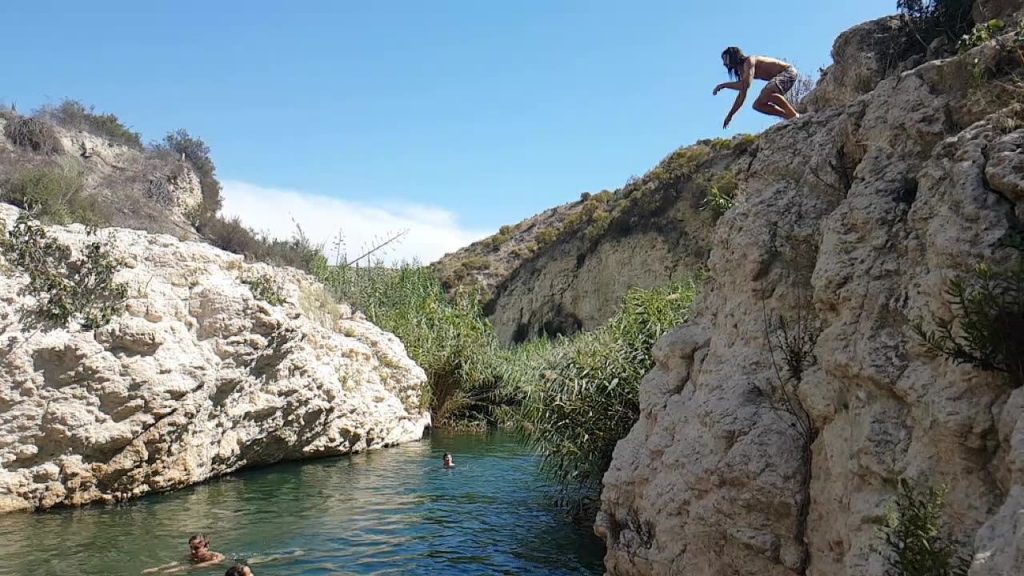
Another department at Sunseed was eco-maintenance. This department mainly consisted of natural building (continuing the tradition of building with gypsum that exists here for millennium), carpentry, and maintaining the acequia line.

The sustainable living department taught some of the various aspects of sustainable health and nutrition. This elements of sustainability is also essential for a sustainable life, because, unless you live in a tropical climate, or somewhere with a constant yield, merely growing the food isn’t enough to survive the whole year round. In seasonal climates such as Europe, the art of preserving, fermenting and storing food is essential to meeting your nutritional needs the whole year round. To preserve fruits you can dry them out, or turn them into jam. Vegetables such as cabbage can be fermented in a variety of ways to provide tasty long lasting source of nutrition. Another reliable source of nutrients the whole year round are grains, and there was always tasty loaves of sour dough bread to be found in the kitchen at Sunseed.

Another aspect of the sustainable living department is the making of cosmetics. Because Sunseed keeps as much water in the valley as possible, polluting the water with the standard pharmaceutical cosmetic and cleaning materials wasn’t an option. Instead the soap, washing up liquid, detergent, were made on site using natural materials. Also cooked up in the laboratory were balms, oils, insect repellents, tinctures and any else we needed in a pharmacopoeia of natural concoctions. Along with the balms and oils, this department ensured the health of the community in other ways. There was a few cultures of kefir and kombucha at hand, to help our stomach flora with daily top ups of healthy bacteria, as well as a medicinal garden full of all the most essential medicinal plants – sage, thyme, lemon, etc. While modern medicine is useful for emergence and intensive care, 95% of peoples medical needs are provided for by the community through a mix of healthy living, medicinal herbs and natural cures, along with a variety of different types of physio-therapies (yoga, massage, etc.)

Finally, there were also the departments with the often thankless task of organising the administrative side of things. While many people come to Sunseed to work in the garden, in the desert, or on different crafts – none of that would be possible without the office department. And equality important is the public relations department; creating a link with the outside world, sharing everything that is being learned and created at Sunseed; and ensuring a constant stream of new people.
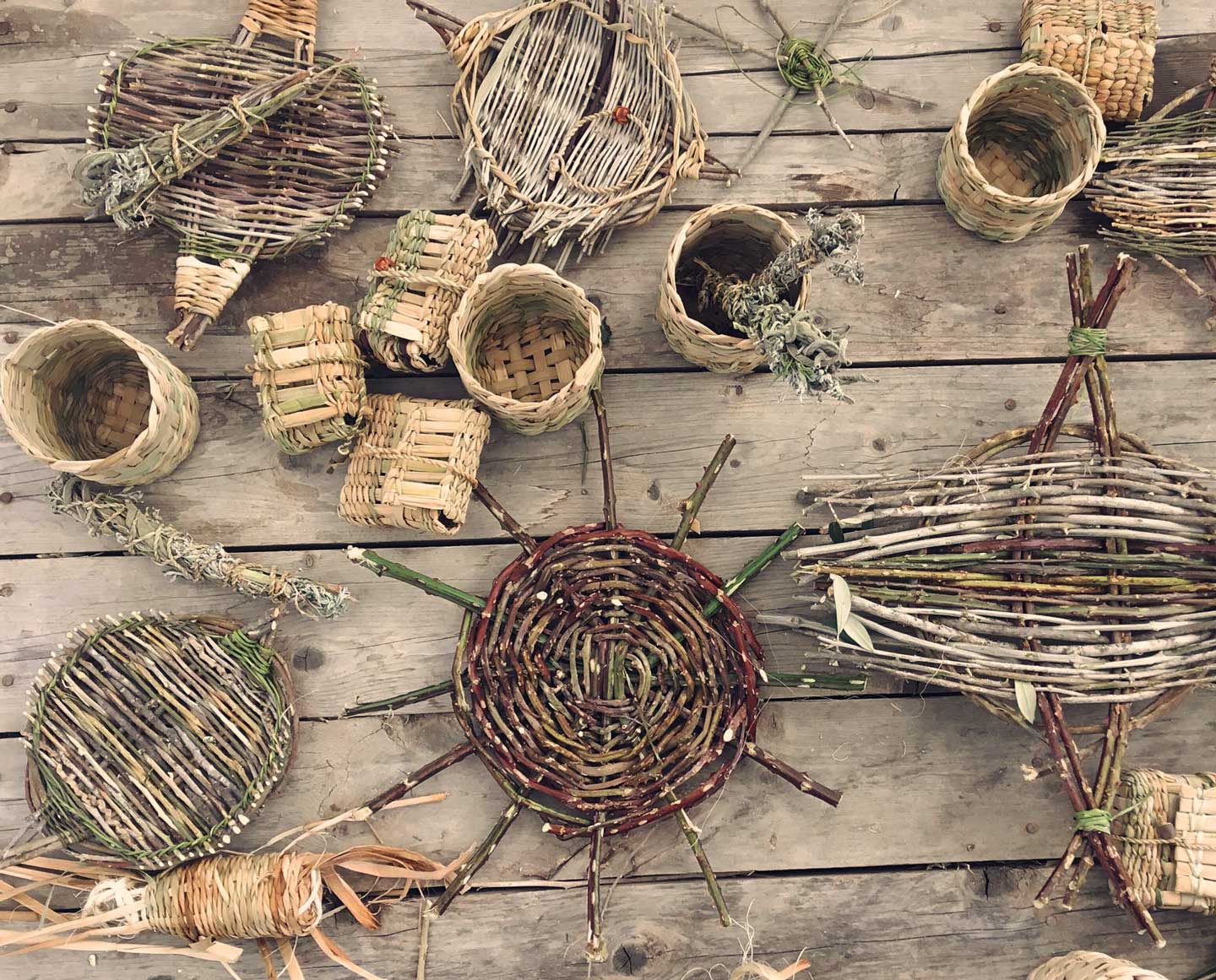
On top of the official departments at Sunseed there was also a huge amount of skill sharing and other activities happening. At my time at Sunseed there was many people taking the initiative to share their skills and knowledge with anyone who had interest. I learned not only how to make baskets out of dry reeds, and cheese platers out of all kind different plant materials, but also the art of intuitive weaving – going out into the valley one day, getting a feel for all the plant life that surrounded us (their elasticity, smoothness, durability, aesthetic qualities), and seeing what worked with weaving. Another skill being shared in the village was carving with agave; someone generously taught me how to make a didgeridoo out of the flower or Timbe from the Pita Escuela teaching me how to make a bird whistle out of smaller pieces of agave. Another person was sharing her knowledge of all the wild herbs in the valley. I was amazed by how many edible and medicinal herbs surrounded us wherever we were. Other activities include things like teaching about the ecocide happening in the local region, as well as campaigned and organising to struggle against that ecocide. And these are just some of the examples of the things that people get up to when they are given the time and space to explore what they are passionate and interested in.
Fin
Sunseed was initial founded with the aim of greening the desert surroundings and carrying out scientific research on methods of landscape restoration. But over the last 30 years this dynamic project has transformed into something else. It has become a democratically organised centre for sustainability, in which people can learn about all aspects of sustainable living. In contrast with the hierarchical and abstract learning of mainstream education, Sunseed is based on a intuitive and experience based mode of learning, in which people design and carry out their own projects, seeking the help of those with experience when needed.

Also contrasting with the mainstream education system is the content of the education. While mainstream schools and universities teach an ever narrowing set of skills that they can sell on the labour market, what is being taught at Sunseed are a broad set of skills that help one live in harmony with nature, with our fellow humans in community, and with ourselves (through self-actualisation). If we hope to equip the coming generation with the skills and knowledge to tackle the challenges that lay away, it is long since time to move towards models of education that can be found at projects like Sunseed.
For more information: https://www.sunseed.org.uk/
